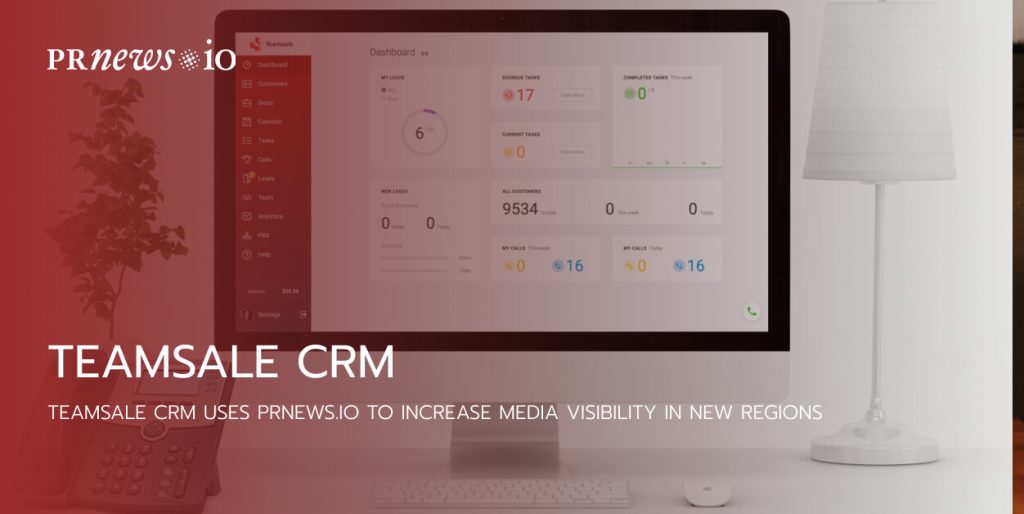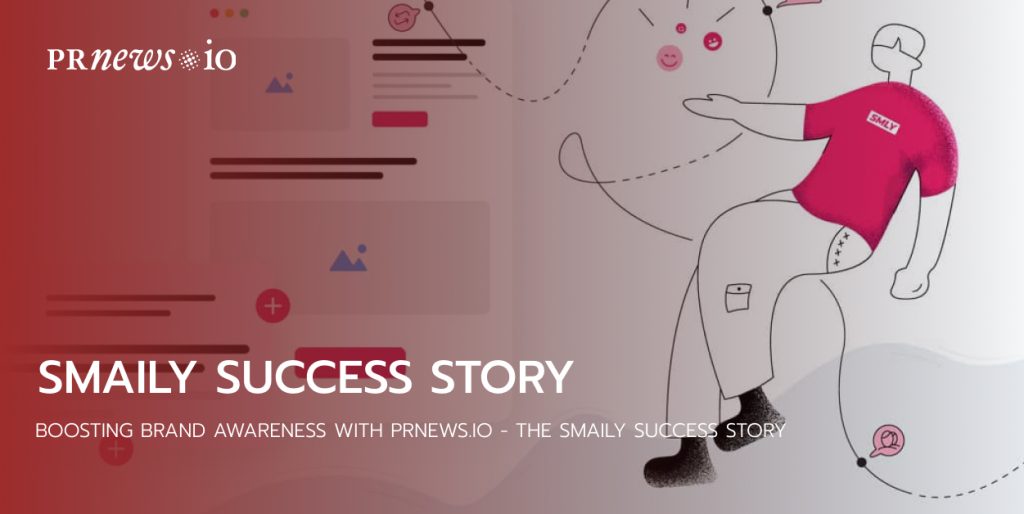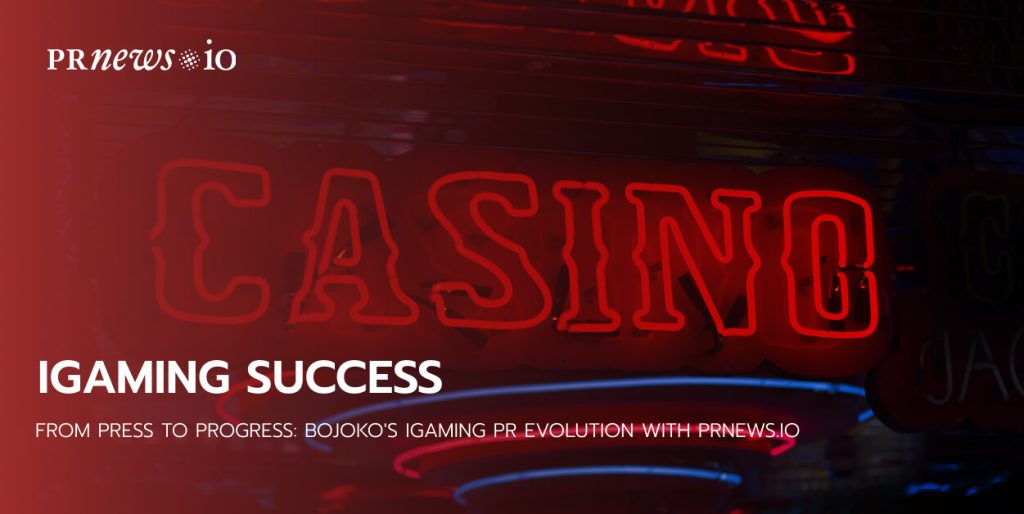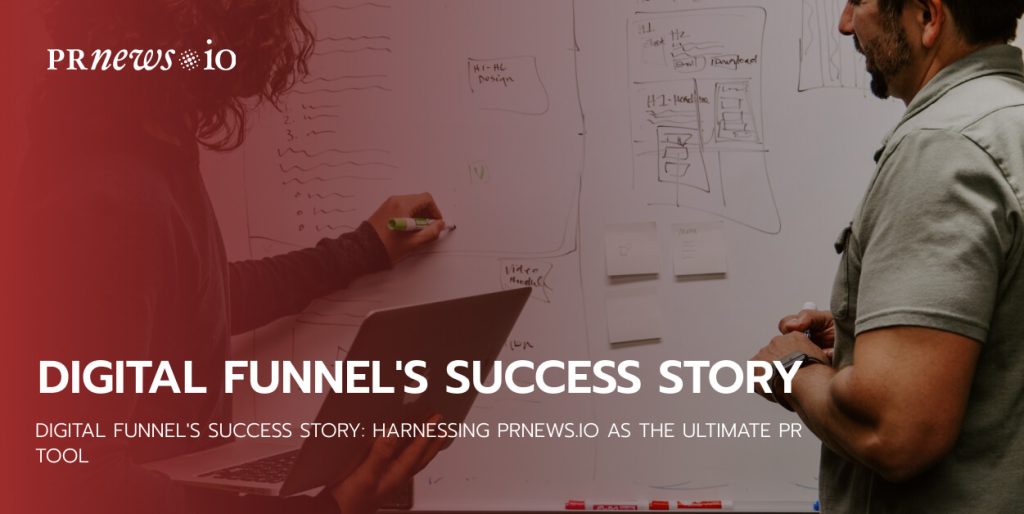In the ever-evolving digital landscape, public relations (PR) has shifted from traditional methods to a more integrated and online-focused approach. As a result, having a robust online presence is no longer an option, but a necessity for businesses aiming to achieve PR success.
We live in an era where the first interaction a potential customer or client has with your brand is likely to be online. For this reason, a company’s website often serves as the front line of their PR efforts.
Whether you’re a startup trying to make your mark, a small business looking to expand your reach, or a well-established corporation aiming to stay relevant, understanding the role of web development in your PR strategy is crucial.
In this post, we’ll explore how a strategically designed website can help shape public perception, build credibility, and foster customer relationships. We’ll also discuss how web development plays a pivotal role in content marketing, SEO, and social media strategies, all of which are integral components of a successful PR campaign.
So, buckle up and get ready to embark on this insightful journey towards building an effective online presence for PR success.
The Intersection of PR and Web Development
In the modern digital age, the lines between various fields are becoming increasingly blurred. This is particularly true when it comes to public relations and web development. While these two fields may initially seem unrelated, they intersect in more ways than one might think.
Understanding PR and Web Development
Before delving into their intersection, let’s define what PR and web development mean.
Public Relations involves managing a company’s reputation and building relationships with its target audience, stakeholders, and the media. It’s about creating a positive image for the brand and effectively communicating the company’s messages.
On the other hand, Web Development is the process of creating websites or web applications. It encompasses several aspects, including web design, content creation, programming, and network security configuration, among others.
The Intersection
So, where do PR and web development intersect? Here are a few key areas:
Online Presence
A company’s online presence is a critical part of its reputation. A well-designed and user-friendly website can enhance a company’s image, while a poorly designed one can damage it. Thus, PR professionals often work closely with web developers to ensure that the company’s online image aligns with its overall PR strategy.
Content Creation
Creating engaging, relevant content is essential for both PR and web development. PR professionals often craft press releases, blogs, and social media posts, which web developers then incorporate into the website. This collaboration ensures that the website not only looks good but also contains valuable content that resonates with the target audience.
SEO
Search Engine Optimization (SEO) is another area where PR and web development overlap. PR activities like link-building and generating media coverage can improve a website’s SEO, leading to higher search engine rankings. Meanwhile, web developers can optimize the website’s technical aspects to make it more search engine friendly.
Crisis Management
When a company faces a crisis, its website becomes a crucial communication tool. PR professionals and web developers must work together to update the website quickly and accurately, providing essential information to the public and media.
That particularly concerns tech companies, many of which create special pages for crisis situations. Take, Slack, for example:
Those situations, however, occur quite rarely.
Leveraging the Intersection
Understanding the intersection between PR and web development can provide companies with a competitive edge. Here’s how:
Integrated Approach
Businesses can adopt an integrated approach, where PR and web development teams work closely together. This collaboration can result in a cohesive online presence that effectively communicates the company’s brand and values.
Consistent Messaging
With PR professionals and web developers working together, businesses can ensure consistent messaging across all channels. This consistency strengthens the brand and helps build trust with the audience.
Enhanced User Experience
By focusing on both the visual appeal and the content of a website, companies can provide a better user experience. This enhanced experience can lead to increased visitor engagement.
Critical Web Development Elements for PR Success
PR is not just about putting out press releases or organizing events. In today’s digital world, your website plays a critical role in your PR strategy. It’s the digital face of your brand, and it’s often the first place potential customers, investors, and partners will go to learn more about you.
As such, it’s essential that your website is well-designed, user-friendly, and optimized for both search and conversion. Here are some web development elements that are crucial for PR success.
Fast Loading Speed
When users visit a website, they expect it to load quickly, providing them with instant access to the desired information. Any delay in loading can lead to frustration and a negative user experience.
Fast loading speed not only ensures a seamless browsing experience but also impacts various PR aspects. Firstly, it helps to capture and maintain the user’s attention. In a competitive online landscape, where countless options are just a click away, a slow-loading website can discourage users from exploring further or engaging with the brand.
On the other hand, a fast-loading website creates a positive first impression, encouraging users to stay, explore, and potentially convert into customers or advocates.
Fast loading speed also contributes to search engine optimization (SEO) efforts. Search engines like Google consider website speed as a ranking factor, favoring websites that load quickly in search results. Higher search rankings mean increased visibility and organic traffic, which can significantly enhance a brand’s PR reach and impact.
In addition, fast loading speed plays a crucial role in social media sharing and referral traffic. When users encounter a website with slow loading times, they are less likely to share it with their social networks or recommend it to others. On the contrary, a fast-loading website is more likely to be shared, leading to increased brand exposure and potential viral spread.
Responsive Design
These days, people use various devices to access the internet. Therefore, having a responsive website is a must.
One of the biggest advantages of having a responsive website is the enhanced user experience it offers. With a responsive design, your website will automatically resize, reposition, and adapt its layout to fit different screen sizes.
This means that users can easily navigate through your website, read content, and interact with the interface without any issues, regardless of the device they are using. This smooth user experience leads to higher engagement, longer visit durations, and increased conversion rates.
Social Media Integration
Social media integration is a crucial aspect of any successful online presence. By incorporating social media buttons on your website, you can actively encourage visitors to follow your brand and share your valuable content with their networks. This simple addition can have a significant impact on your reach and visibility, ultimately enhancing your public relations efforts.
When users engage with your social media buttons, they become advocates for your brand, spreading the word about your products or services to their own followers. This organic sharing helps to amplify your brand message and generate additional exposure. As a result, your website traffic can increase, leading to more potential customers and conversions.
Apart from increasing your reach, active participation on social media platforms allows you to build meaningful relationships with your target audience. By regularly posting relevant and engaging content, you can establish yourself as a trusted source of information in your industry. This consistent presence fosters trust and loyalty among your followers, making them more likely to engage with your brand and share your content with their networks.
Being active on social media also provides opportunities for networking with influencers in your field. These influential individuals can help amplify your brand message through collaborations, guest posting, or mentions on their own platforms. Building relationships with influencers can lead to increased media coverage, as they may feature your brand in their content or recommend your products or services to their followers.
Having user-friendly navigation is crucial for any website. It ensures that visitors can easily find the information they’re looking for, leading to a positive user experience. One of the key elements of a user-friendly navigation is a well-structured and intuitive navigation menu. This menu should be clearly organized and easy to understand, guiding visitors to different sections or pages of the website.
When visitors can easily navigate through a website, they are more likely to stay longer, explore more content, and ultimately achieve their goals. By contrast, if visitors struggle to find what they need quickly, they may become frustrated and leave the site. This not only results in a lost opportunity to engage with potential customers but can also have negative consequences for SEO rankings.
Search engines like Google take into account factors such as bounce rate (the percentage of visitors who leave a site after viewing only one page) and time spent on site when determining search rankings. If visitors leave a website quickly due to poor navigation, it sends a signal to search engines that the site may not be providing value to users. As a result, the website’s SEO rankings can be negatively impacted.
In addition to SEO considerations, a poorly structured navigation menu can also damage a brand’s reputation. Visitors may perceive a website with confusing navigation as unprofessional or unreliable. On the other hand, a website with a clear and intuitive navigation menu enhances the overall user experience and conveys professionalism.
To create a user-friendly navigation, it is important to consider the needs and preferences of the target audience. Conducting user research, analyzing user behavior, and utilizing best practices in web design can help in creating an effective navigation system.
By prioritizing user needs and making it easy for visitors to find the desired information, businesses can enhance user satisfaction, improve SEO rankings, and strengthen their brand’s reputation.
Case Studies: Success Stories of Web Development in PR
The intersection of PR and web development has led to some remarkable success stories. Let’s delve into some inspiring case studies that demonstrate the power of web development in PR.
Adobe: From Software Company to Digital Experience Powerhouse
Adobe, once known solely for its design software, has transformed into a global leader in digital experiences. The company’s website is a key element in this transformation. With a user-friendly interface, engaging content, and interactive features, Adobe’s website effectively communicates the brand’s mission and values.
The site showcases Adobe’s products in a way that is both informative and compelling, using customer testimonials, case studies, and interactive demos.
These features have been instrumental in driving up Adobe’s annual subscription numbers. Additionally, the company’s blog and social media integration allow Adobe to engage with its audience on a more personal level.
This strategic use of web development in PR has helped Adobe rebrand itself as a digital experience powerhouse.
Airbnb: Building Trust and Community Through Web Development
Airbnb’s success story is a prime example of how effective web development can foster trust and build an online community. The company’s website is designed to make booking accommodations as easy and intuitive as possible.
But Airbnb goes beyond functionality. It uses its website as a platform to share stories from hosts and travelers around the world. This storytelling approach, combined with user reviews and detailed host profiles, builds trust and fosters a sense of community among users.
As a result, Airbnb is a brilliant blend of PR and web development that has contributed significantly to Airbnb’s global success.
Tesla: Web Development for Product Launches and PR Campaigns
Tesla, the electric vehicle manufacturer, has used its website as a key tool for product launches and PR campaigns. When launching a new model, Tesla uses its website to showcase the vehicle’s features, provide updates, and even facilitate pre-orders.
When Tesla launched the Model 3, the company used its website to create a huge amount of buzz. The site was updated with high-quality images, videos, and interactive features that allowed visitors to customize their own Model 3.
This innovative use of web development in PR helped Tesla generate over 325,000 pre-orders in the first week, making the Model 3 launch a massive success.
Startup Statistics by Embroker: An Ideal Example the Integrated Approach
Embroker’s comprehensive study on startup statistics is a testament to the power of data-driven storytelling and engaging visuals. Their post presents a collection of 106 startup statistics, providing valuable insights into the startup landscape.
The post has received significant attention, garnering over 1,000 backlinks from reputable sources like Investopedia, TechCrunch, and Business Insider. This demonstrates the credibility and relevance of the information presented.
By combining compelling data and accessible presentation, Embroker’s study effectively captures the essence of the startup world and contributes to the understanding of this dynamic industry.
Embroker’s post is a perfect example of the integrated approach, where PR and web development teams closely collaborate. First, notice the size of the content, which is an ideal fit for Twitter. Besides, each stat has a Twitter button at the bottom so that users can easily share this information with their friends and followers.
Baby Name Generator by Shutterfly: Personalized Content Bound to Go Viral on Social Media
The Baby Name Generator by Shutterfly is a shining example of how interactive tools can be leveraged to meet and exceed audience expectations.
Unlike many other websites that simply provide a generic list of baby names, this innovative generator takes personalization to the next level. It starts by asking users if they prefer a male, female, or neutral name. Then, it allows them to select a desired “name style” such as celebrity, vintage, biblical, and more.
These unique features enable users to have a truly individualized and fulfilling experience when searching for the perfect name for their little one. By tailoring the generated names to the user’s preferences, Shutterfly ensures that each suggestion is both relevant and meaningful.
Through this interactive tool, Shutterfly goes above and beyond in providing a valuable resource for expectant parents. By incorporating elements of personalization and customization, the Baby Name Generator offers a delightful and rewarding experience, making the journey of finding the right name even more memorable.
Information about engaging interactive tools like these is more likely to be shared via social media – another vivid illustration of how web development and PR professionals can efficiently work hand in hand.
Jetflix Vacations by mybaggage
“Jetflix Vacations” by mybaggage is a standout piece of content that cleverly combines the familiar concept of browsing for a show with the popular search for a dream vacation. This interactive quiz taps into the desire many people have to travel simply for the sake of experiencing new adventures.
With “Jetflix Vacations,” you can let your streaming preferences guide your next getaway. The quiz takes into account your favorite TV show genres, the mood you prefer when watching, the type of vacation you’re seeking, and even the season you’d like to travel in. Based on your answers, it generates a vacation destination that aligns with a show you’re likely to enjoy.
Not only does this quiz provide personalized vacation recommendations, but it also offers the opportunity to discover new shows and series that match your interests. It’s an exciting way to explore new travel destinations while expanding your binge-watching repertoire.
Needless to say that everyone who enjoys traveling is likely to mention this exciting quiz to their friends on Twitter, Facebook, or Instagram.
These case studies illustrate how web development can play a crucial role in PR strategies. Whether it’s rebranding a company, building trust with customers, or launching a new product, a well-designed and strategically planned website can make a significant impact. As we move further into the digital age, the integration of web development in PR will only become more important.
Very often, in-house development teams lack the resources to handle PR projects, even relatively small ones. That is when companies seek assistance from external web development service providers such as GetDevDone.
Conclusion
The role of web development in modern Public Relations is undeniable. Building an online presence is not just a trend, but a necessity for businesses to thrive in today’s digital age. Web development acts as the backbone of your online presence, serving as the foundation of all your digital marketing efforts.
By harnessing the power of digital PR through web development, businesses can establish robust online platforms that facilitate communication with consumers, shape public opinion, and create a favorable online presence. This, in turn, increases brand awareness and improves relationships with the target audience.
Whether you’re a small business owner or the head of a large corporation, investing in web development and digital PR is a strategic move that can lead to high ROI and success in the modern business landscape.
Content Marketing Platform
- 100,000+ media publications;
- get backlinks to your product;
- scale work with content distribution.





